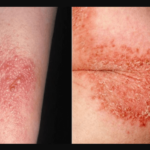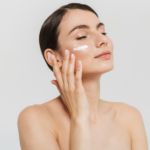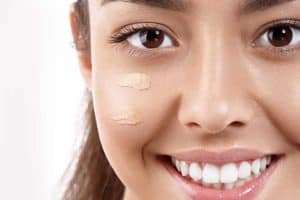Sunlight is great for the body as it helps produce vitamin D. But too much sun, especially during the peak afternoon hours, will damage your skin quickly. Excess exposure to the UV rays of the sun can greatly increase skin aging and even increase the risk of skin cancer. So, how long does it take for the sun to damage your skin?
The time it takes for the sun to damage your skin in the day is generally 20 minutes. After 20 minutes, you should apply sunscreen and reapply every 2 hours or after swimming or sweating excessively. The time until damage varies greatly based on several factors.
The factors that affect the time it takes for your skin to become damaged by the sun are as follows:
- Time of day
- Duration
- Type of UV rays
- Season
- Clothing
- Sunscreen
- Altitude
- Skin type, gender, and age
- Ozone layer
Signs of skin damage may also not appear for several years, 10 to 30 years after exposure. So if you are in your 20s and spend a lot of time in the sun, you may not see the effects of the sun damage until you are in your 50s. Even sun damage from when you were a child will appear later, in your 40s and 50s. So it’s a good idea to protect at all ages.
Continue reading to learn how much sun you need and how long does it take for the sun to damage your skin.
How Long Does It Take for the Sun to Damage Your Skin?
Generally, the strong UV rays of the sun can harm ordinary skin even for 5 minutes of exposure. That is, if you don’t have sufficient protection, such as sunblock, sunscreen, or protective clothing.
20 minutes is a general rule of thumb for the maximum exposure time. This can vary greatly, and it is best to wear sunscreen before being exposed.
The time of day makes a big difference in how fast your skin will be damaged by the sun. Between 10 and 4 pm is when the sun is strongest, and it can take only 5 to 10 minutes more fair-skin people to start to see signs of damage, including sunburn.
Lighter skin-colored people should be more careful about protecting their skin, as their skin type is more susceptible to damages caused by exposure to the Ultraviolet (UV) rays of the sun.
According to the American Cancer Society, UV radiation coming from the sun or man-made sources is linked to skin cancers, such as squamous and basal cell skin cancers.
It has been observed that skin aging and the formation of wrinkles happen more quickly to persons who are exposed intermittently to the UV radiation coming from the sun and other man-made UV radiation devices.
However, the body also needs sunlight to function normally. Sunlight activates the inactive precursor of vitamin D (cholecalciferol) to become active vitamin D (calcitriol – vitamin D3, or calciferol) through enzymatic hydroxylation.
This type of sunlight is the rays of the sun before 10 in the morning. That is why sun rays before 10 am are needed by the body to help in the synthesis of vitamin D through the use of sunlight. (source)
Vitamin D has crucial functions in the body that allows you to stay fit and healthy. But in the process of getting enough sunlight, you should also know how to avoid getting sick because of UV rays. You must know how to enjoy the skin properly without damaging your skin or increasing your risk of skin cancer.
Before we can answer this question sufficiently, we must first know the types of UV rays emitted by the sun at different times of the day.
The below video gives some great insight into exactly what the sun is doing to your skin:
What Are UV Rays?
Ultraviolet (UV) rays are rays coming from the sun or other man-made devices, such as tanning beds and UV therapy equipment. There are 3 general types of UV rays: UVA, UVB, and UVC.
UVA projects the least energy but is the type of radiation that can damage your skin and may heighten your risk of skin cancer.
Meanwhile, UVB rays elicit more energy and are reportedly related to most skin cancers and skin damage. On the other hand, UVC rays have the most energy but do not usually penetrate through the ozone layer; thus, they are not harmful.
When Is the Sun Strongest During the Day?
As previously mentioned, the safest time to enjoy the sun is before 10 am or after 4 pm. This is because the UV rays from the sun are strongest from 10 am to 4 pm. This is the peak period when the sun’s rays can damage your skin the most, increase signs of aging, and increase your risk of skin cancer.
Some research has found out that although the sun’s rays may not be able to penetrate the other body organs to cause damage, it may cause melanoma of the eye and Merkel Cell Carcinoma, another type of skin cancer (aside from squamous and basal cell cancer). So make sure to wear sunglasses, especially during the peak afternoon hours.
Some new research, however, contradicted this finding and reported that the best time to gain vitamin D is between 10 am to 3 pm. You would have to choose your own time of exposure, taking into consideration the other factors involved, and depending on your skin type.
You Need Only 10 Minutes of Sun to Get Vitamin D
Vitamin D is very important for your health, as it is responsible for a lot of physiologic functions in your body. You can get vitamin D from the sun as well as through supplements. You only need about 10 minutes per day of sunlight to get your required vitamin D.
However, this can vary greatly from person to person, so it is still recommended to supplement, especially during the winter and if you live away from the equator.
Vitamin D helps build and strengthen bones through the increased renal absorption of calcium and decreased release of parathyroid hormones (PTH). The normal levels of these substances in the body have to be maintained to ensure proper bone formation. (source)
This state of balance or equilibrium (homeostasis) between calcium and phosphorus decreases your risk of hypocalcemic tetany, rickets, and osteomalacia. These are calcium-related diseases where the bone becomes weak and brittle (rickets and osteomalacia) or where abnormal spasms occur in the body (hypocalcemic tetany).
Vitamin D also helps in the growth and development of skin cells. Studies have also indicated that vitamin D may prevent colorectal cancer.
Aside from the time of day, you have to learn too about the other factors that can affect how the sun can damage your skin.
Factors Affecting the Sun’s Damage to Your Skin
1. Time of Day
The time of the day you stay under the sun can damage your skin or activate your vitamin D. Take note that the sun’s rays before 10 a.m. can be a cure (light therapy) for physiologic hyperbilirubinemia (increased bilirubin) in newborn children too.
2. Duration
The longer you stay exposed to UV rays, the more likely you will damage your skin. How long does it take for the sun to damage your skin? For some, signs of skin aging may occur after years of exposure, but for many, sun exposure for a few minutes can cause burns, scaling, premature aging (wrinkles), or skin cancer.
So don’t expose yourself to unnecessary UV rays from the sun or tanning beds without prior knowledge of their effects on your body.
3. Type of UV Rays
UVA and UVB rays are both harmful to the skin. Before undergoing any UV therapy, you have to ensure that these are not harmful UV radiations. I recommend consulting a doctor first if you’ll be using different tanning bed options. Ideally, it is best to avoid tanning beds altogether.
4. Season
The sun’s rays are more harmful during summer, as clouds may not be there to lessen the impact. UV radiation, however, can penetrate through the clouds. You have to wear protective gear whenever you are outdoors.
5. Clothing
Wearing protective clothing and gear can decrease your risk of UV exposure. I recommend that you wear protective clothing during peak afternoon hours. It’s also good to use umbrellas, shades, hats, and similar gear whenever you are under the sun to lessen the time it takes to damage your skin.
6. Sunscreen
Sunblock lotions, sunscreens, and other protective skin preparations can also reduce your risk of skin damage from the sun. They prevent the sun from damaging your skin over time but must be applied regularly every 2 hours or after swimming or sweating excessively.
7. Altitude
The higher the altitude you are at, the stronger the UV radiation can penetrate. So, you should have more protection in higher altitudes because it takes a shorter time for the sun to damage your skin.
8. Skin Type, Gender, and Age
Your skin type can affect how long you can be in the skin before it starts to get damaged. Those with darker skin are less susceptible to damage than those with lighter skin colors.
The risk is also increased in blond or red-haired individuals and those with green or blue eyes. Freckled skin is also a sign that you are at a greater risk of skin damage and cancer.
Reportedly, men develop more skin cancer than women. Furthermore, older people have an increased risk of skin damage and skin cancer.
9. Ozone Layer
The ozone layer helps protect you from the sun’s dangerous UV rays. Therefore, the less ozone layer present, the more the UV radiation becomes harmful. NASA Ozone Watch reported that the stratosphere found over the Antarctic is depleted of the ozone layer (source). Thus, if you belong to this region, your risk of skin damage and skin cancer is increased.
Here are more tips you can observe to prevent skin damage from sun exposure.
See the below video for more on how to protect your skin so you can be outside for longer without damaging it:
Tips on Preventing Skin Damage Due to Sun Exposure
- Get your dose of sunlight during the coolest time of the day.
- Don’t overexpose yourself to UV rays. 10 to 15 minutes a day is sufficient to get a good amount of vitamin D. You can increase your vitamin D by eating vitamin-rich foods, such as eggs yolks, fatty fish (tuna, mackerel, salmon), and beef liver, also fortified foods (milk, cheese, cereals, orange juice). Or you can supplement with a high-quality vitamin D supplement.
- Wear protective gear and sunscreen when exposing yourself to strong UV rays.
- When skin-tanning, ensure your safety first before exposing your skin. Know your skin type before doing so.
- Consult your doctor immediately upon the first symptoms of skin damage or abnormality.
To play safe, you can observe the tips provided above. You should maximize the use of the sun’s rays to your own advantage without damaging your skin.
Conclusion – How Long Does It Take for the Sun to Damage Your Skin?
So, how long does it take for the sun to damage your skin? There is no definite answer. The time it takes depends on a lot of factors mentioned above. It will also depend on the type of skin you have. A general rule of thumb is 10 to 20 minutes is all it takes to start getting damage.
You may want to find out what method is applicable to your type of skin, lifestyle, and environment by conducting careful experiments. You can use a logbook to record the results. Use this data to determine how long you can be in the sun without getting burned or showing other signs of damage.
I always recommend wearing sunscreen, and protective clothing as the sun damage that is inflicted now will appear in aging years later. I don’t want to scare you from going outside, but just use caution and common sense.
Related reading:
Noxzema for Sunburn [Is Noxzema Good or Bad for Sunburn?]
Noxzema for Eczema [Is Noxzema Good or Bad for Eczema?]


![Neutral Skin Tone Defined [and Best Colors for Neutral Skin] neutral skin tone](https://skincaregeeks.com/wp-content/uploads/2021/05/neutral-skin-tone-150x150.png)






